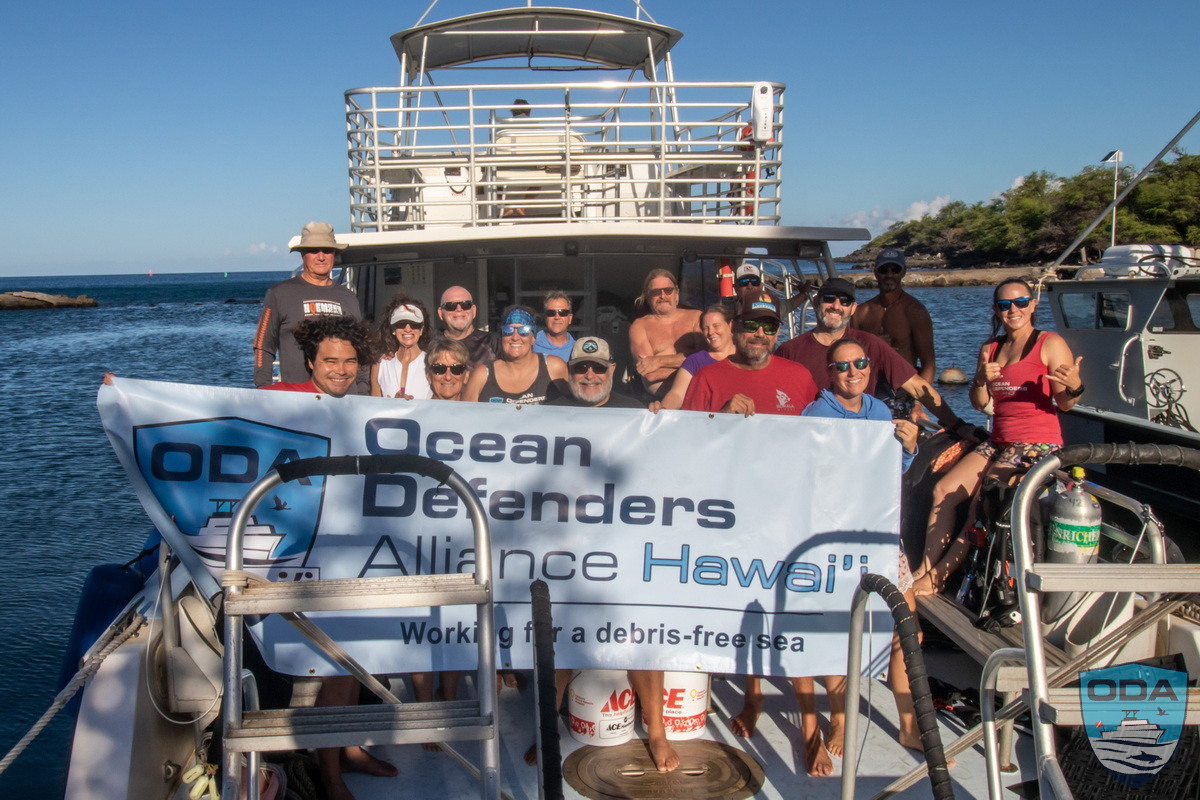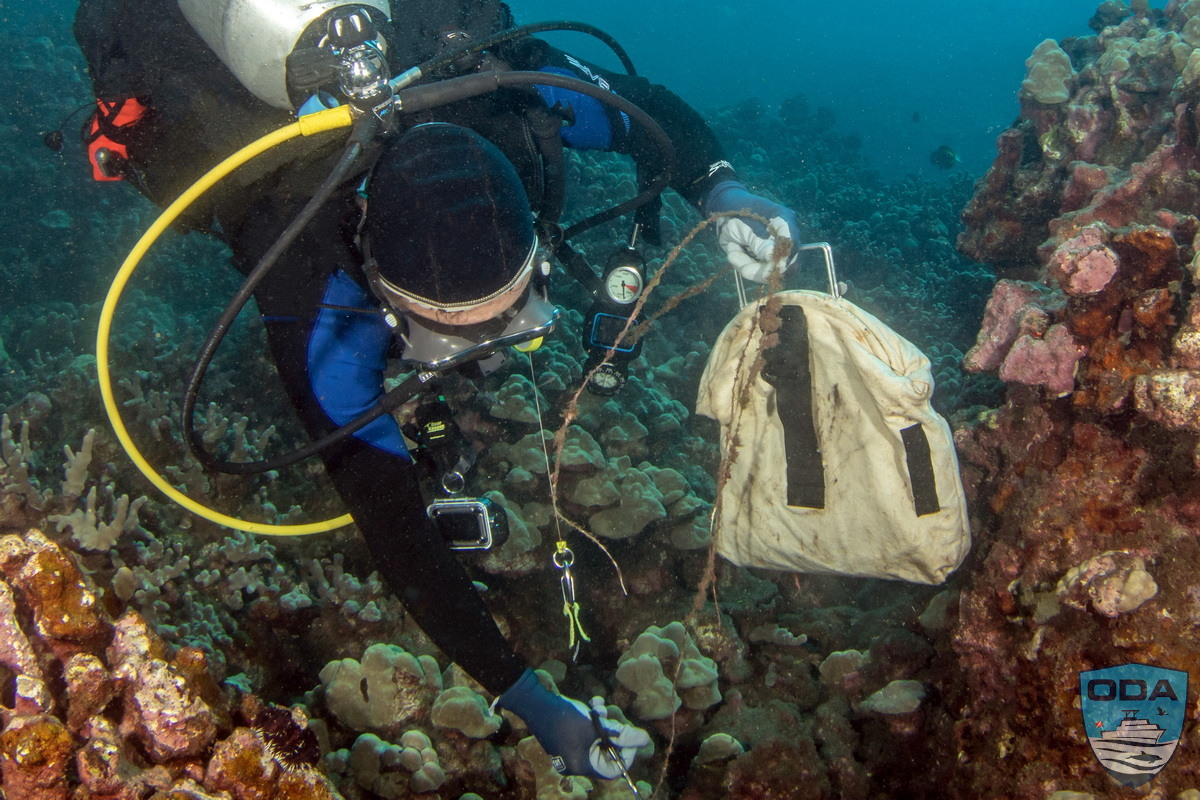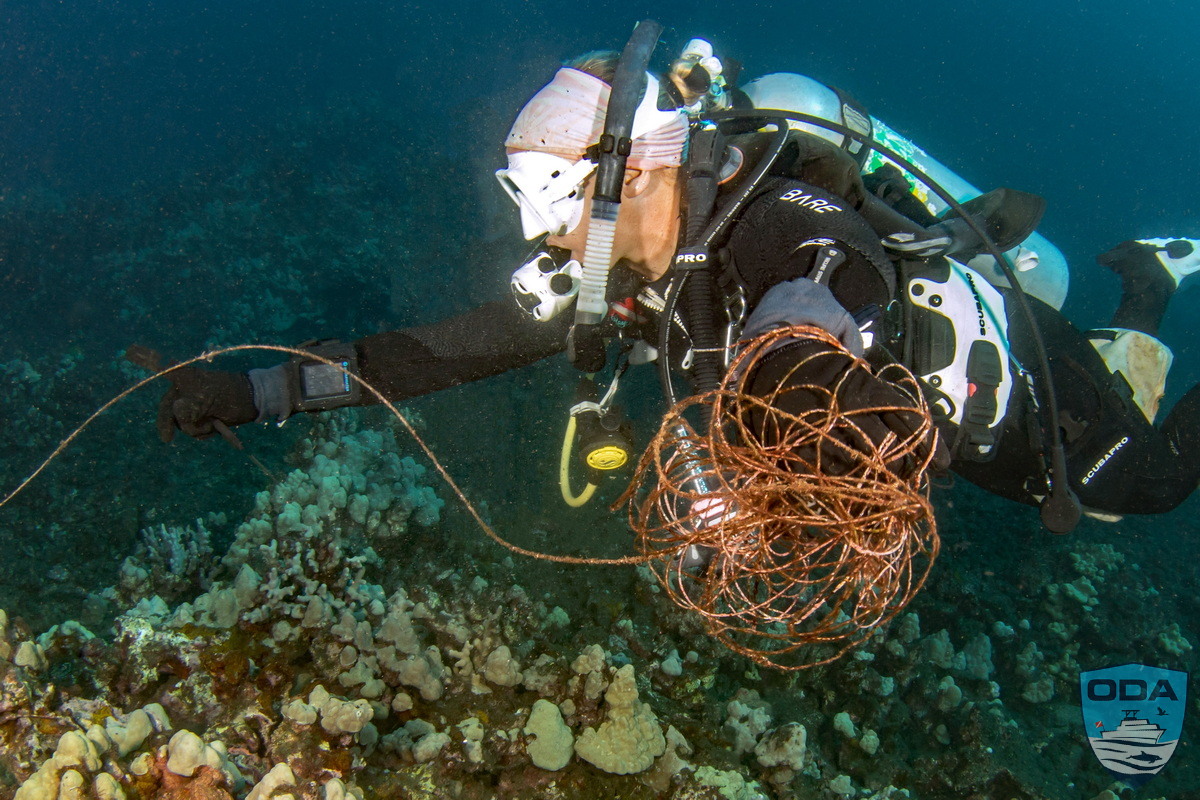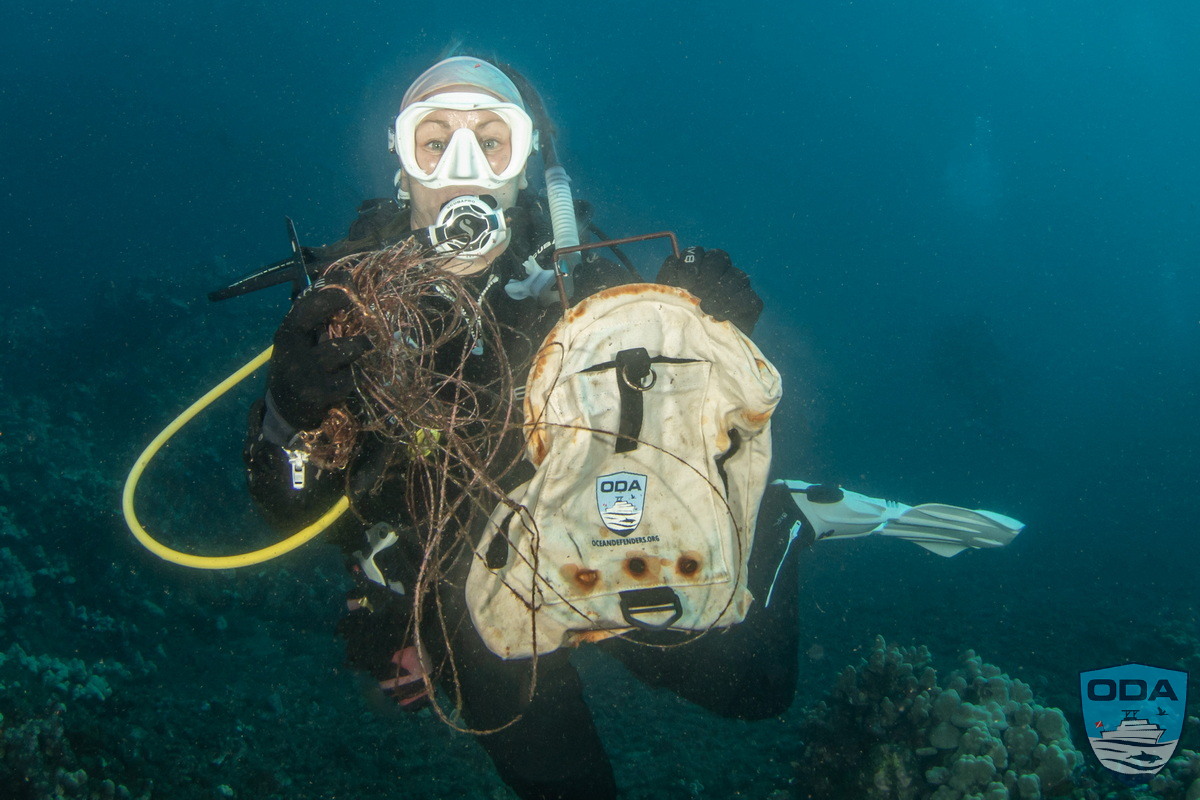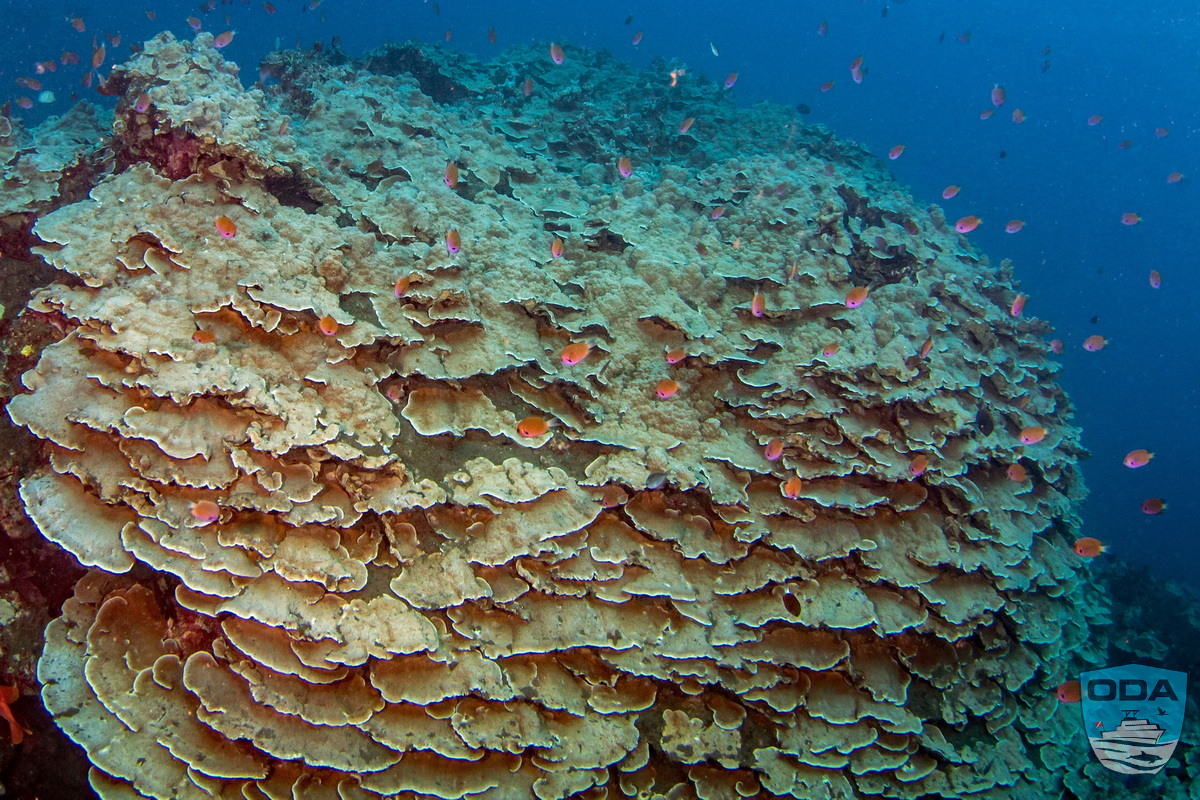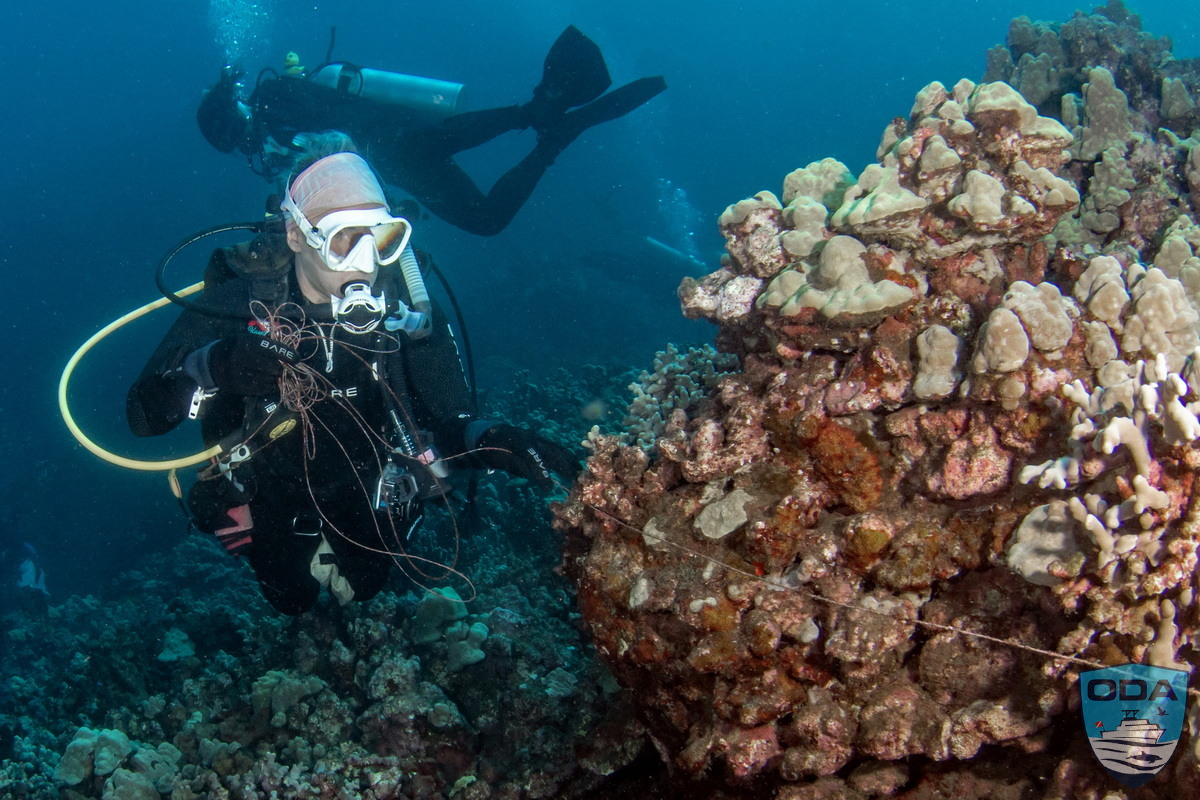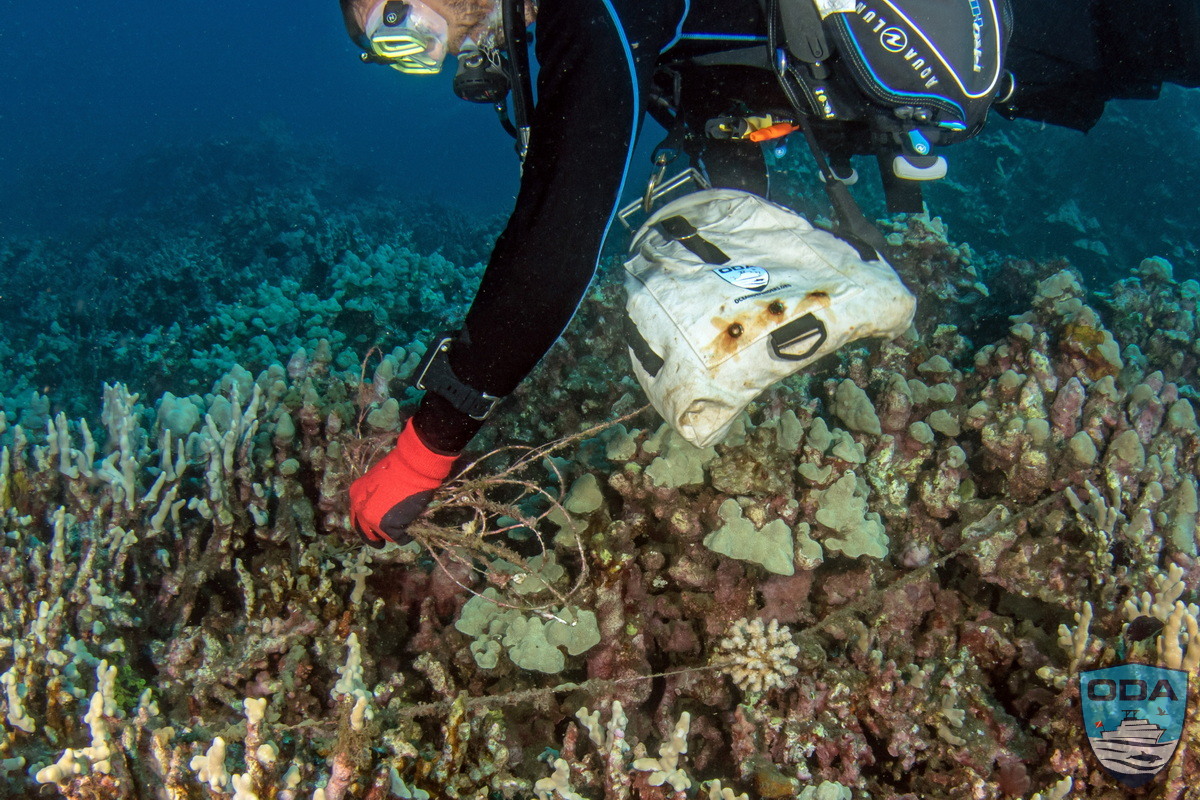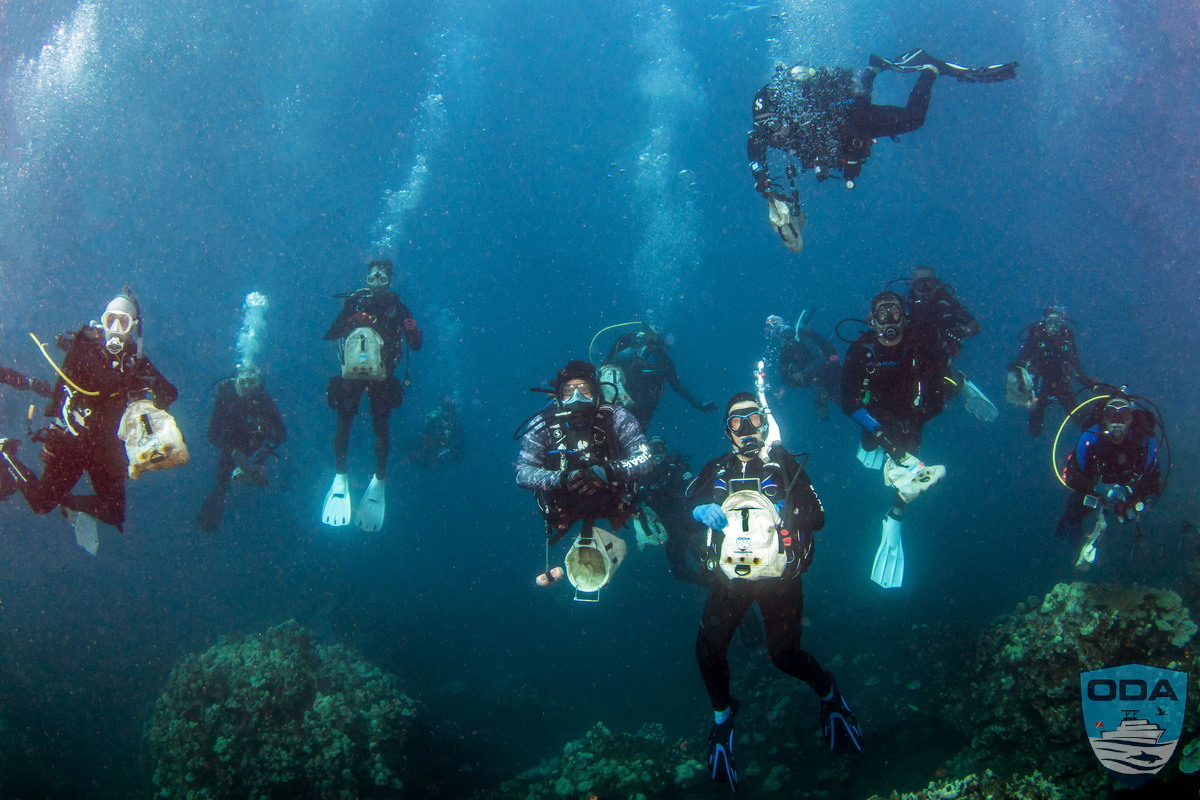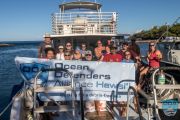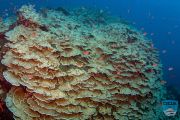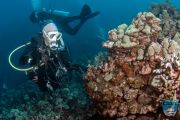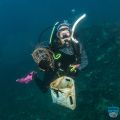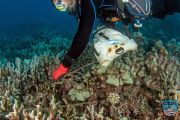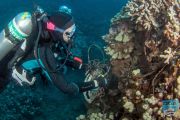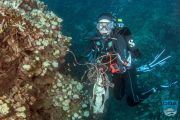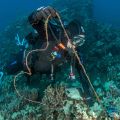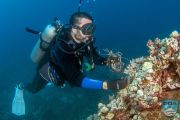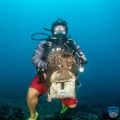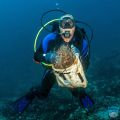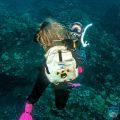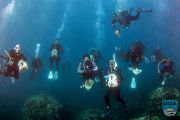.By Kay Cooper, ODA North Hawai’i Island Volunteer Coordinator
Our incredible ocean advocates are back at it, tackling the North Kohala Coast on the Big Island of Hawai'i, with partner Kohala Divers!
Twice a year, Kohala Divers with ODA's Big Island Northern Coordinator Kay Cooper take an advanced cleanup charter along the Northern Coast of the Big Island to clean hard-to-get-to areas of the coastline that are frequently fished from shore by local fisherman. This coastline is known for strong currents, large swell, and high winds, which makes it difficult to reach by boat. Most of the moorings along this coastline (8 in total), are not exactly where the fisherman like to fish from, which requires our cleanup divers to go for a long surface swim or a shallow under water swim before reaching the debris.
When the weather is calmer, we will do live-boat cleanups that allow us to get close to the sites where the fisherman like to fish from and drop right on all the debris. The conditions truly need to be just right for this to happen as Namaka (Kohala Divers boat), is a larger boat that acts like a sail when the winds are strong, pushing it close to the rocky shoreline.
On Thursday, October 23rd, conditions were just right to allow a live boat cleanup to happen! We re-visited a site close to the small boat harbor in Kawaihae, called Kawaihae Gulch, where we have found lots of fishing line, lead weights, and various other unusual items on our previous cleanups. With our 11 volunteers, 2 staff, and 4 Kohala Divers staff / ODA volunteers, we set out in the morning hoping the wind would calm down, as it was gusting quite a bit before we went out. When we reached our site, only a 5-minute boat ride, the weather was great, and we were ready to dive!
After I gave a very thorough, detailed safety briefing, all our volunteers suited up and got their gear together, as we all had to drop together at the same time to swim away from the boat. Once the last of us were in the water and clear from the boat, Namaka pulled away out to blue water, and we did a quick surface swim closer to shore where we planned to descend. I had us all start south of our intended cleanup site to scout for any debris that might be around this area. We all stayed together as a group, looking in the shallows and down to around 50 feet. The area south of the site looked amazing with no debris and had stunning coral! We swam for about 20 minutes heading north, then suddenly hit the “jackpot” of fishing line that had draped itself all over the reef.
Our dedicated team quickly began to work. With good buoyancy, gloves, cutting tools, and rubbish bags in hand, we began to carefully remove line from around corals, in between rocks, off the floor, and out of holes. Our bags started to fill fast with thick fishing line and older line that had been down there for a long time. Some of the line went on and on, one leading me from 30 feet to around 60 feet until I finally found the end of it that had a large ulua hook on the end of it. With the line being so scattered, it’s very important for all our volunteers to look up and around them to ensure they stay with the group, monitor their depth, and most importantly, keep track of their air. This work is very meticulous and can easily keep you distracted long enough to lose track of your team and air. Since this was a live-boat cleanup, when the first person reached 1,000 PSI in their tank, we all gathered together, and came up to do our 3-minute safety stop as a group.
Once we all started our safety stop (to decompress) between 15-20 feet deep, I deployed our delayed surface marker buoy and we all began to swim, under water, away from shore toward deeper water. This is important to do so the boat can pick us up farther from shore to avoid drifting too close to the rocks. Once our safety stop was completed, we all surfaced together and began to board the boat 2 divers at a time. We filled half of a large, black bucket in just one dive! Way to go! Since we didn't have long to work on this site on the first dive, we decided to stay here for the second dive and drop immediately over the rubbish, so we have longer to work.
With a 1-hour surface interval (break) and another briefing, our divers suited up again and began to drop in the water. I stayed on the boat this time as 1 staff member with captain have to be on the boat at all times, and our other Kohala Divers staff member, Jezza Evans, joined the team. Once all divers were in the water, we pulled the boat away, back toward blue water while our divers began their work! A couple of divers stayed deeper to work on the line there, while the rest of the team stayed shallow, trying to get the hard-to-reach line from the corals. This is very long, thick line going for the larger fish, so it can really end up deep, over 100 feet. Our deeper divers stayed above 70 feet as this was the second dive and there was plenty of work to do at this depth.
This dive was a shorter dive because they were working hard and breathing fast trying to remove so much line. As the bags started to fill, they began their 3-minute swimming safety stop at around 45 minutes, then surfaced for pick up. Divers boarded Namaka, two at a time and we completely filled our large, black bin with line and some lead weights. The divers even pulled up a carpet runner about 8 feet long and 2 feet wide!
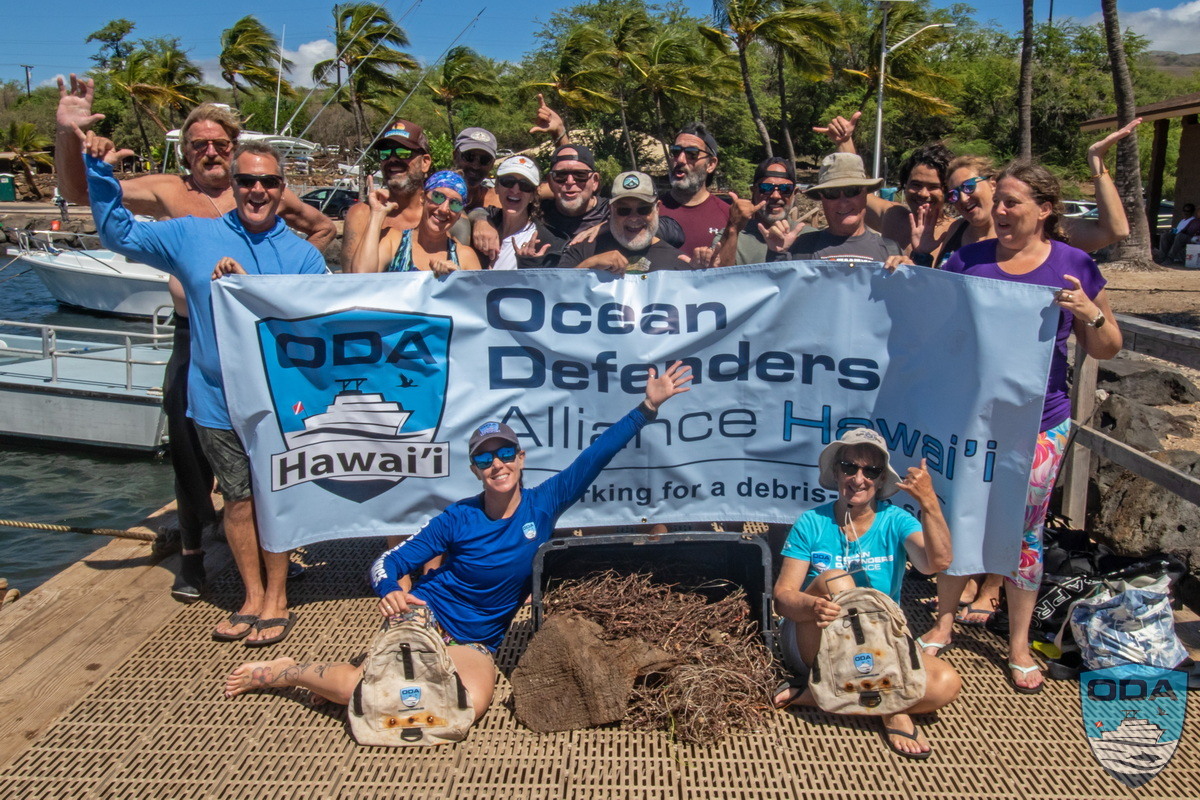
We made our way back to the dock and got our group photo with the bin full of line. In total, we collected around 3,500 feet of fishing line, 10 lead weights, 8 lures, some plastic fragments, around 6 ulua hooks, and a large carpet runner! Total weight is 50 pounds!
Our volunteers today were: Mathew Belcher, Jezza Evans, Mo Hennessy, James Kregness, Greg Krieger, Meghan Murray, Sivan Najita, Bo and Jamie Pardau, James Redshaw, Mike and Lori Simms, Kristin Spalding, Don Tremel, Doug Watson and John Woodward.
Many thanks to Bo Pardau for once again taking these fantastic pictures.
Mahalo everyone that came out and helped keep our oceans clean!
Check out more about our Hawai'i island activity!


